
Interview with Samuel Lind by Edmee Cappas
August of 2008 in Loiza, Puerto Rico
Walking down a narrow street I hear the beat of African drums, my destination the legendary home and studio of Samuel Lind. As I knock on the wooden door I am taken back at how his home is unique and true to the artist eyes embracing all who enter.
Growing up in the town of Loiza, which the Nigerian slaves of the Yoruba tribe settled in the 16th century; Samuel Lind proudly embraces his heritage and demonstrates this with honor and privilege through his art pieces. As a child he was encouraged to pursue this talent by his elementary teacher Maestra Rosa. He was very moved that he had accidentally ran into her and the opportunity presented itself so that he can thank her personally for her words of encouragement as well as the supplies she provided him with. He smiles as he recounts how as a child he would sneak off from school and instead get on the bus and go to the Art school in San Juan which is approximately 20 miles away. There he would observe and soak in what is today his passion. He points to a painting titles “El Caminito” and explains that the man in that picture is his Uncle who was like a father to him as well as a giving him a lot of inspiration. So strong is his connection to that era he now uses it as the background design for his business cards and claims that it is one piece that will never leave his home. He speaks humbly of his mother and although money was scarce he recalls many special moments with her.
Samuel feels that his art is the instrument that best describes who he is; it is his identity. His graphic designs depict the importance of culture and he infuses his African heritage in all of his work. Most evident of his African heritage are the works titled “La Fiesta de Loiza” (The Festival of Loiza) and his “Baile Bomba” (Bomba Dance) series. Musical masters inspired many of his art pieces; specifically Tite Curet Alonso who wrote a song based on the 3 kings.
Samuel Lind feels that through meditation he becomes inspired and when he writes about the works he validates their existence. In Loiza they depend on him to portray their spirit; in Puerto Rico he was one of the few chosen to do graphic series of cultural events because of his rich knowledge on how to convey messages through art. The movement of voluptuous hips, strong passion on the faces and a lively stride to the feet is a testament to his attention to details.
One perspective that Samuel Lind wants to convey is how historically art conveys a message, regardless of the medium used. There is a story that the artist is trying to tell the viewer. His vocation and responsibility is to bring to life the figures in his work, to show the passion of the dancer, to express anticipation and to do this well. His work draws the viewer in and inevitably leaves you wanting to see more.
Samuel Lind is a featured Guest Artist at http://www.studioporto.com/ also featured at http://www.elyunque.com/
Samuel Lind had gallery showings in N.C.A&T State University, Africa International House for the African Festival of the Arts, Washington Park Chicago, Cucas Gallery in Chicago, Illinois
You can write or contact Samuel Lind at loizano@prtc.net P.O. Box 527 Loiza, Puerto Rico 00772
Samuel Lind’s studio is in Loiza #187 directly across from artisan Ayala, The Master of Mask making, famous for mask indigenous to Loiza made of coconut husk.
Tite Curet Alonso wrote the song Las Caras Linda (De Mi Gente Negra) (The Beautiful Faces (Of My Black People) recorded by Ismael Rivera, is considered by many in the Puerto Rican community as a classic.
August of 2008 in Loiza, Puerto Rico
Walking down a narrow street I hear the beat of African drums, my destination the legendary home and studio of Samuel Lind. As I knock on the wooden door I am taken back at how his home is unique and true to the artist eyes embracing all who enter.
Growing up in the town of Loiza, which the Nigerian slaves of the Yoruba tribe settled in the 16th century; Samuel Lind proudly embraces his heritage and demonstrates this with honor and privilege through his art pieces. As a child he was encouraged to pursue this talent by his elementary teacher Maestra Rosa. He was very moved that he had accidentally ran into her and the opportunity presented itself so that he can thank her personally for her words of encouragement as well as the supplies she provided him with. He smiles as he recounts how as a child he would sneak off from school and instead get on the bus and go to the Art school in San Juan which is approximately 20 miles away. There he would observe and soak in what is today his passion. He points to a painting titles “El Caminito” and explains that the man in that picture is his Uncle who was like a father to him as well as a giving him a lot of inspiration. So strong is his connection to that era he now uses it as the background design for his business cards and claims that it is one piece that will never leave his home. He speaks humbly of his mother and although money was scarce he recalls many special moments with her.
Samuel feels that his art is the instrument that best describes who he is; it is his identity. His graphic designs depict the importance of culture and he infuses his African heritage in all of his work. Most evident of his African heritage are the works titled “La Fiesta de Loiza” (The Festival of Loiza) and his “Baile Bomba” (Bomba Dance) series. Musical masters inspired many of his art pieces; specifically Tite Curet Alonso who wrote a song based on the 3 kings.
Samuel Lind feels that through meditation he becomes inspired and when he writes about the works he validates their existence. In Loiza they depend on him to portray their spirit; in Puerto Rico he was one of the few chosen to do graphic series of cultural events because of his rich knowledge on how to convey messages through art. The movement of voluptuous hips, strong passion on the faces and a lively stride to the feet is a testament to his attention to details.
One perspective that Samuel Lind wants to convey is how historically art conveys a message, regardless of the medium used. There is a story that the artist is trying to tell the viewer. His vocation and responsibility is to bring to life the figures in his work, to show the passion of the dancer, to express anticipation and to do this well. His work draws the viewer in and inevitably leaves you wanting to see more.
Samuel Lind is a featured Guest Artist at http://www.studioporto.com/ also featured at http://www.elyunque.com/
Samuel Lind had gallery showings in N.C.A&T State University, Africa International House for the African Festival of the Arts, Washington Park Chicago, Cucas Gallery in Chicago, Illinois
You can write or contact Samuel Lind at loizano@prtc.net P.O. Box 527 Loiza, Puerto Rico 00772
Samuel Lind’s studio is in Loiza #187 directly across from artisan Ayala, The Master of Mask making, famous for mask indigenous to Loiza made of coconut husk.
Tite Curet Alonso wrote the song Las Caras Linda (De Mi Gente Negra) (The Beautiful Faces (Of My Black People) recorded by Ismael Rivera, is considered by many in the Puerto Rican community as a classic.
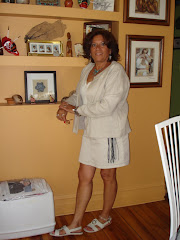
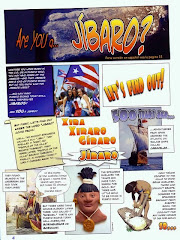




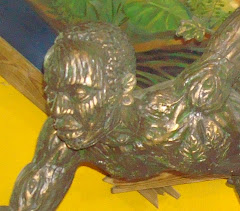





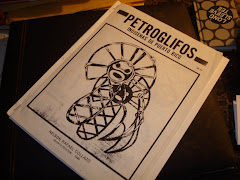



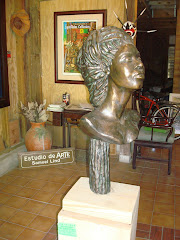
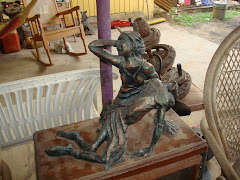

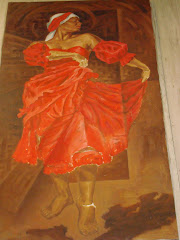
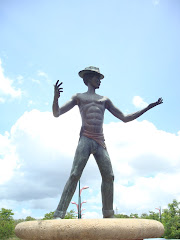
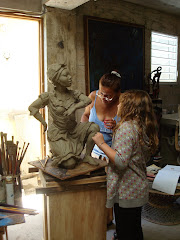

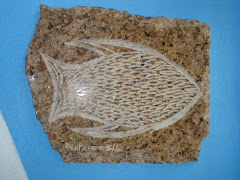
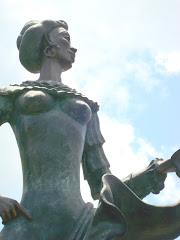
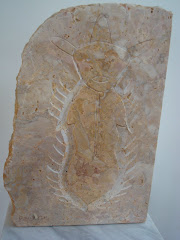


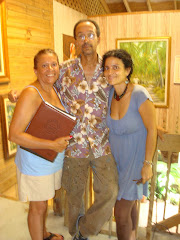


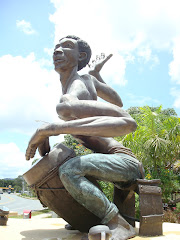
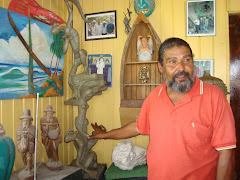

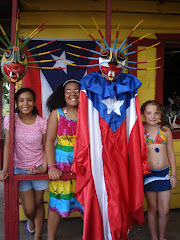


1 comment:
I am a native Puerto Rican "de pura cepa" who sport a "mancha de platano" Wherever I go. My name happens to be Clarence R. Staples since my father was of American ancestry. In 1991 I stopped in a Loiza bar for a drink and saw this
poster that capture every fiber of my roots. I asked the bartender about it and was told that the author studio was a block away. I just left my drink and set to the studio of Samuel Lind a very pleasant down to earth Boricua. Who made me feel at home and made some of his works accesible to me. I still maintain contact with him and if you are on the Island and have not seen or visit him, you are missing on the best the Island has to offer.
Post a Comment